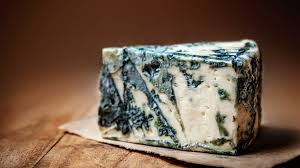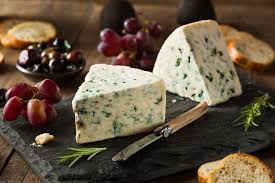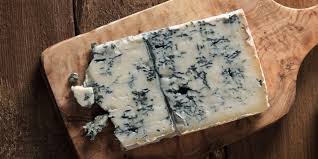If you love blue cheddar, specifically the solid and tart taste of Gorgonzola, you are in for an adjustment with this Gorgonzola pasta recipe. This dish capacities a rich and smooth Gorgonzola sauce that impeccably covers your number one pasta, making it a liberal dinner that is fabulous to fulfill. Whether you are a carefully prepared Gorgonzola fan or new to this wonderful cheddar, this recipe should take a stab at every individual who values areas of strength for blue cheddar
Table of Contents
The Allure of Gorgonzola Cheese
Gorgonzola holds a particular location inside the hearts of cheese lovers. Originating from Italy, this cheese is thought for its unique texture and sturdy, piquant flavor. It’s one of the oldest blue cheeses in the world, with some assets suggesting that it was first made inside the small city of Gorgonzola, near Milan, as early as 879 AD. Others claim its origins lie in Pasturo in Valsassina, an area famed for its herbal caves, which provide the proper surroundings for getting older cheese. These caves hold an everyday temperature between 6°C and 12°C, best for developing the function of blue veins and the creamy texture of Gorgonzola.
The cheese’s call is derived from the metropolis of Gorgonzola, and it’s believed that the cheese became traditionally made with milk from herds coming back from the mountains in the autumn. Over time, the production of Gorgonzola spread from Lombardy to extraordinary regions, particularly Piedmont, solidifying its area as a staple in Italian delicacies.



A Versatile Ingredient
One reason Gorgonzola is so loved is its flexibility inside the kitchen. It could be used in significant dishes, from straightforward spreads on bread to additional complicated recipes like risottos, pizzas, and, obviously, pasta. Its sturdy flavor pairs well with many elements, making it a fave for folks who enjoy experimenting inside the kitchen. Whether you’re using Gorgonzola piccante, identified for its sharper and more excellent extreme taste, or Gorgonzola dolce, this is milder and creamier; this cheese provides a unique and high-priced touch to any dish.
Making Creamy Gorgonzola Pasta
Regarding consolation food, few topics can beat a bowl of creamy pasta. This Gorgonzola pasta recipe combines the rich, smooth surface of a Gorgonzola sauce with impeccably cooked pasta, fostering a charming and luxurious dish. This is how you can make this superb feast at home.
Ingredients:
- 200g of your selected pasta (along with tagliatelle, penne, or orecchiette)
- 100g Gorgonzola cheese (either piccante or dolce)
- 150ml heavy cream
- 150ml milk
- 200g mushrooms (optionally available but endorsed for introduced texture and taste)
- 2 tbsp butter
- 1 tbsp olive oil
- 2 tbsp chopped walnuts (for garnish)
Instructions:
Prepare the Pasta:
Start by cooking your pasta in a large pot of salted boiling water until al dente. This commonly takes about eight to ten minutes, depending on the kind of pasta. Once cooked, drain some of the pasta water and channel the rest. Shower the pasta with olive oil to prevent it from sticking, and put it aside.
Cook the Mushrooms:
Warm the margarine and olive oil over medium intensity in an enormous skillet. Add the cut mushrooms and sauté till brilliant brown and delicate.
At this point
, you may add a touch of white wine to the pan to deglaze and intensify the taste. Allow the wine to be put together for dinner earlier than proceeding.
Make the Gorgonzola Sauce:
In the identical skillet with the mushrooms, pour in the heavy cream and milk. Stir lightly to combine, then fold in the Gorgonzola cheese. Allow the cheese to melt slowly, stirring occasionally, until you have a smooth, creamy sauce. Season with salt and black pepper to taste. Add reserved pasta water to achieve consistency if the sauce seems too thick.
Combine and Serve:
Add the cooked pasta to the skillet with the sauce and mushrooms. Toss the entirety together until the pasta is nicely coated in the sauce. If the sauce is too thick, add a touch more of the reserved pasta water. Serve the pasta warm, garnished with chopped walnuts, clean parsley, and a sprinkle of black pepper. For a further burst of taste, crumble some more Gorgonzola over the top.
Additions and Variations
While this recipe is delicious, there are plenty of tactics to customize it to suit your taste. Here are some minds:
Vegetables:
Add a few sparkling spinach to the skillet with the mushrooms for a similar dose of vegetables. Other great alternatives encompass sautéed zucchini, bell peppers, or maybe roasted cherry tomatoes. These additions enhance the dietary fee and add a pop of color to your dish.
Herbs:
While parsley is a traditional desire for garnish, glowing basil or thyme could also complement the flavors of this dish. Suppose you have some reachable sense unfastened to experiment.
Nuts:
Walnuts add an adorable crunch and a slightly bitter contrast to the creamy sauce. However, you can also try pine nuts or pecans for a texture that is considered one-of-a-kind.
Storing and Reheating
If you have leftovers, you could relish this pasta the following day. However, be conscious that the sauce might also thicken as it cools. To repair its creamy texture, gently reheat the pasta on the variety, including a sprint of cream or some reserved pasta water (in case you saved it) to loosen the sauce. Stir well, and your pasta can be as delicious as when you first made it.
Using Other Blue Cheeses
Gorgonzola is a conventional choice for this recipe. However, it’s not the simplest option. If you decide, you may substitute it with any other shape of blue cheese. Remember that blue cheese will lose some of its sharpness even as heated, so you can select a more pungent cheese to hold a robust flavor. Roquefort, Stilton, or Danish Blue are all excellent options that can be used to supply their unique traits to the dish.
A Closer Look at Gorgonzola’s History
Gorgonzola cheese has a protracted and storied history. It’s believed to have been first produced in the city of Gorgonzola, located just outside Milan, in 879 AD. However, some historians argue that the cheese’s birthplace is Pasturo in Valsassina, a region with a rich dairy culture. Due to their stable temperatures and humidity levels, the herbal caves in this location have long been used to age diverse cheeses, including Gorgonzola.
The manufacturing of Gorgonzola slowly spread from Lombardy to neighboring areas, including Piedmont. Over time, it has become certainly one of Italy’s most famous cheeses, known for its great blue veins and creamy texture. Today, Gorgonzola is delighted worldwide and remains a staple in Italian cooking, praised for its flexibility and aggressive taste.
Conclusion
Whether you’re a long-term enthusiast of Gorgonzola or are attempting it for the essential time, this rich Gorgonzola pasta is a dish that has a positive influence. Dinner can be delighted on any occasion with its rich sauce, impeccably cooked pasta, and adaptable other options. Serve it with a simple green plate of mixed greens or a glass of your inclined wine, and you have a striking and soothing dinner.
So why not try this recipe? Whether you stick with the traditional version or add your personal twist, this Gorgonzola pasta will surely become a favorite in your home.
FAQs About Gorgonzola Cheese
Is blue cheese halal
- Blue cheese is not inherently halal, as the mold applied in its production may not continuously meet halal standards. For a blue cheese to be considered halal, it must be made using components and processing strategies that follow halal nutritional legal guidelines.
Is Gorgonzola cheese tasty?
Taste is subjective; however, many people discover Gorgonzola scrumptious because of its creamy texture and tangy flavor. It can add a completely specific intensity to dishes and pair properly with numerous foods.
days.
How is Gorgonzola eaten?
Gorgonzola can be enjoyed in numerous ways. It is frequently utilized in salads, pasta dishes, and pizza toppings. It can also be served on cheese boards, paired with fruits, nuts, and honey, or absolutely unfolded on bread or crackers.
Is Gorgonzola proper on pizza?
Yes, Gorgonzola can be an incredible topping for pizza. Its creamy, tangy flavor enhances more than a few elements, including crunchy ingredients like pears and figs and savory factors like walnuts and prosciutto.
How to serve Gorgonzola?
Gorgonzola can be served in numerous ways: as a cheese platter with quiet results and nuts, crumbled into salads, melted into sauces, or spread on bread and crackers. It pairs well with sweet and savory accompaniments.
Why do human beings like Gorgonzola?
People experience Gorgonzola for its specific taste and creamy texture. The mixture of its bold, tangy flavor and easy consistency makes it a favorite among cheese fans.
What animal is Gorgonzola?
Gorgonzola cheddar is made from cow’s milk. It isn’t connected with any exact creature separated from cows, which gives the milk utilized in its assembling.
Is feta and Gorgonzola the same?
No, feta and Gorgonzola aren’t the equivalent. Feta is a Greek cheddar produced using sheep’s or, alternately, goat’s milk, recognized for its brittle surface and tart flavor. Gorgonzola is an Italian blue cheddar produced using cow’s milk, described through its smooth surface and blue veins of form.
How vintage is Gorgonzola?
Gorgonzola cheddar has lengthy records, with certain resources asserting it dates back to 879 Promotion. It is thought about perhaps the most established blue cheddar in any case underway nowadays.